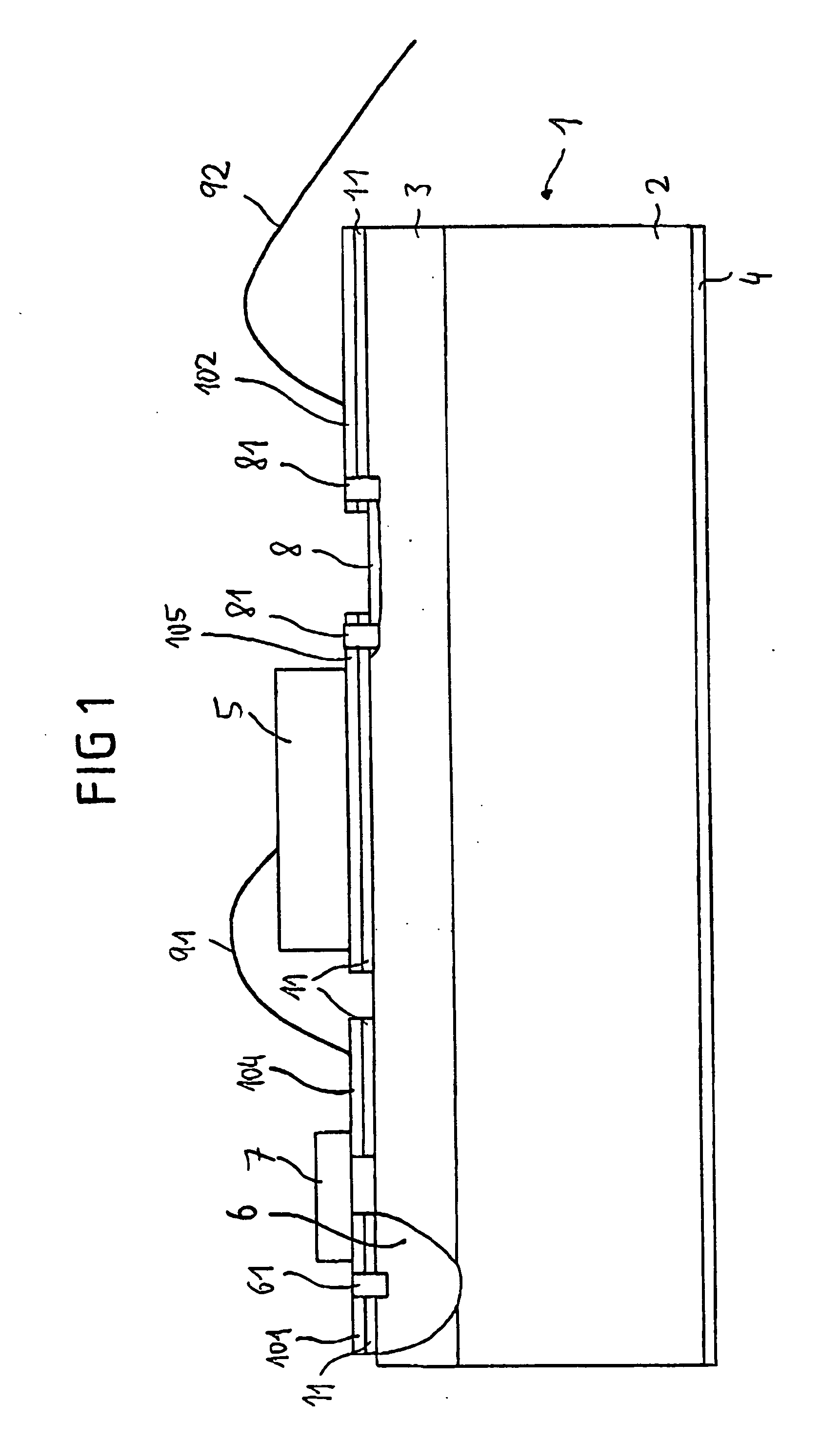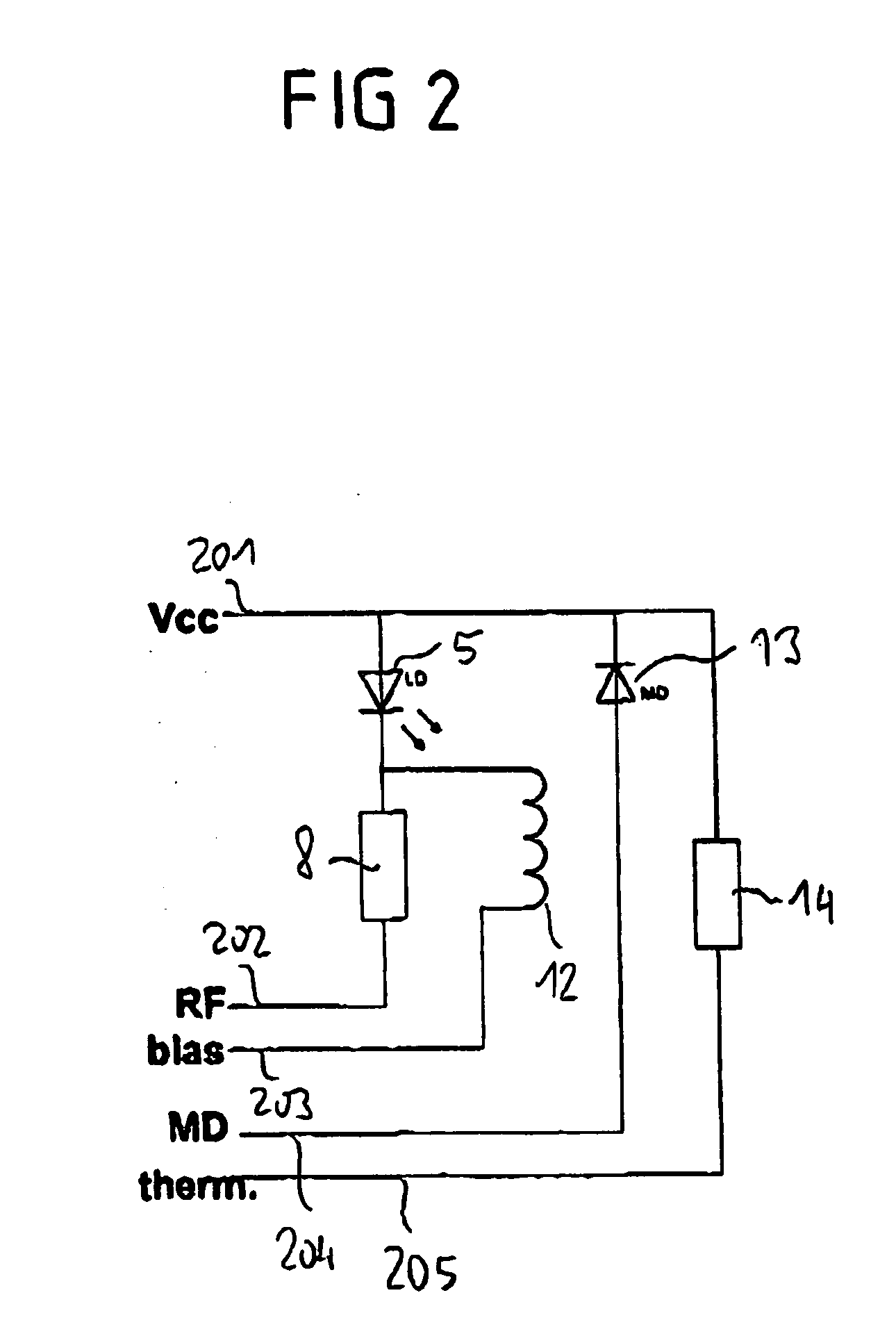Optical transmission and/or receiving device
- Summary
- Abstract
- Description
- Claims
- Application Information
AI Technical Summary
Benefits of technology
Problems solved by technology
Method used
Image
Examples
Embodiment Construction
[0031] FIGS. 1 to 4 show an exemplary embodiment of an optical transmitting device with a semiconductor chip 5, which is arranged on a carrier substrate 1, also referred to as the submount.
[0032]FIG. 1 shows a sectional representation of the submount 1 with the elements arranged on it. The submount 1 comprises a highly conducting silicon substrate 2 and a high-ohmic, low-doped silicon epitaxial layer 3 arranged on it. The silicon substrate 2 preferably has in this case a resistance of between 0.05 and 0.2 ohm-cm, in particular of 0.01 ohm-cm, and a thickness of between 300 and 400 μm, in particular of about 360 μm. The epitaxial layer 3 has a resistance of preferably greater than 20 ohm-cm, in particular of 100 ohm-cm, and a thickness of 30 to 50 μm, in particular of 40 μm. On the underside of the silicon substrate 2 there is a large-area rear metallization 4, which is, for example, adhesively bonded or soldered onto a TO base plate, as will be explained in more detail on the basis...
PUM
 Login to View More
Login to View More Abstract
Description
Claims
Application Information
 Login to View More
Login to View More - R&D
- Intellectual Property
- Life Sciences
- Materials
- Tech Scout
- Unparalleled Data Quality
- Higher Quality Content
- 60% Fewer Hallucinations
Browse by: Latest US Patents, China's latest patents, Technical Efficacy Thesaurus, Application Domain, Technology Topic, Popular Technical Reports.
© 2025 PatSnap. All rights reserved.Legal|Privacy policy|Modern Slavery Act Transparency Statement|Sitemap|About US| Contact US: help@patsnap.com



